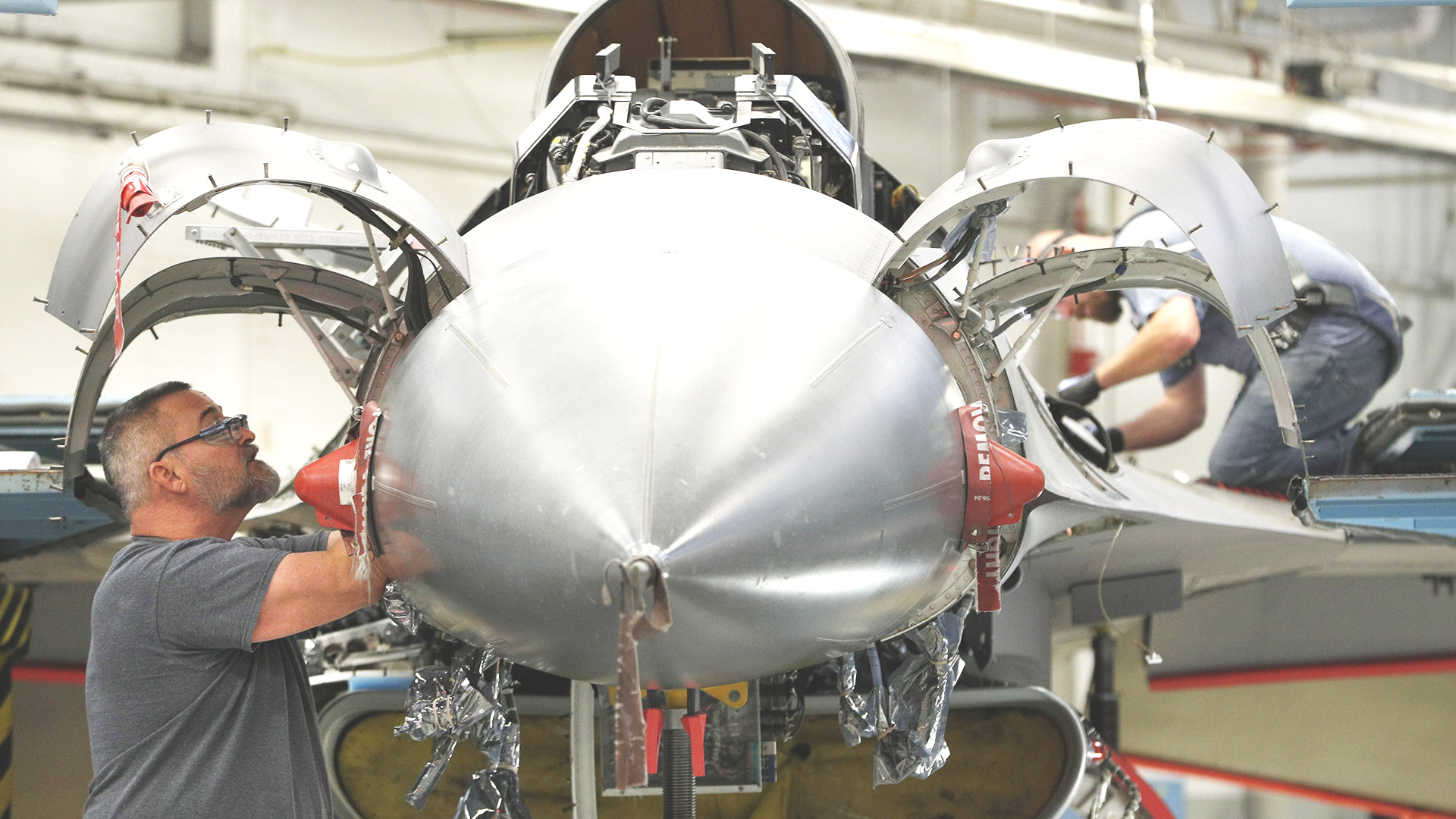In a major policy change, the Biden administration will now allow U.S. contractors on the ground in Ukraine to help its military maintain and repair some of the $61 billion worth of weapons donated by America, CNN reported. In particular, the shift is designed to help keep F-16 Vipers and Patriot air defense batteries in working order.
Until this decision, the Biden administration has allowed only a small number of U.S. troops in Ukraine, mainly to help keep tabs on U.S. donated equipment, but no Defense Department (DoD) civilian contractors. However, there are a number of U.S. contractors working in Ukraine directly for that country.
The move was approved earlier this month, CNN reported, citing “an official with direct knowledge.”
“In order to help Ukraine repair and maintain military equipment provided by the US and its allies, DoD is soliciting bids for a small number of contractors who will help Ukraine maintain the assistance we’ve already provided,” a defense official told the network.
Continuing its sensitivity toward escalating the conflict and angering Moscow, the Biden administration won’t allow those contractors anywhere near the fighting.
“These contractors will be located far from the front lines and they will not be fighting Russian forces,” the official told CNN. “They will help Ukrainian Armed Forces rapidly repair and maintain U.S.-provided equipment as needed so it can be quickly returned to the front lines.”
The change of heart came about because several of the systems provided to Ukraine – particularly F-16s and Patriots – “require specific technical expertise to maintain,” the defense official said.
The U.S. has not provided any F-16s to Ukraine, but has signed off on allowing a coalition of nations to transfer upwards of 85 of the U.S.-made fourth-generation fighters. The Pentagon has provided three U.S.-made Patriot batteries to Ukraine. Other allies have as well.

After nearly three years of extremely heavy fighting, much of the equipment provided to Ukraine has worn down or been damaged, and is in need of repair. The Biden administration’s refusal to allow experienced U.S. contractors to work in Ukraine meant the equipment had to be hauled out of the country and repaired in Poland, Romania or other NATO nations, or fixed with remote help via video chat or secure phone.
Both situations are suboptimal, creating delays in getting the weapons back into the fight or limiting the work that could be done in-country remotely. This is especially true for F-16s and Patriots, two very complex systems that require a high degree of maintenance by skilled technicians.
Though these contractors will be far from the front lines, being in Ukraine has risks as Russia rakes the whole country with missiles and drones. To address that, companies bidding on contracts will be required to develop “robust risk mitigation plans,” officials told CNN, to reduce threats to their employees.
“The Department made this decision after careful risk assessment and in coordination with interagency stakeholders,” the defense official said. “Each US contractor, organization or company will be responsible for the safety and security of their employees and will be required to include risk mitigation plans as part of their bids.”

Unlike the wars in Afghanistan and Iraq where thousands of contractors lived in those countries on sprawling bases, this effort will be limited to between a few dozen and a couple of hundred personnel at a time.
“It is worth noting that there already are a wide array of American companies who have personnel in Ukraine fulfilling contracts for the Ukrainian government, so this will not lead to a substantial increase of employees of U.S. companies working on the ground in Ukraine,” the defense official told CNN.
The officials said this new plan was launched before Democratic Vice President Kamala Harris was trounced in Tuesday’s election loss to now-President-elect Donald Trump. A huge wildcard here is whether the incoming administration continues this policy, something that is not a given considering Trump’s reticence about continuing support for Ukraine and, in general, keeping the U.S. involved in overseas conflicts. This move also comes as the lame-duck Biden administration is rushing to move some $6 billion worth of military aid to Ukraine before it has to pack up on Jan. 20.
You can read more about what Trump’s second administration could mean for the war in Ukraine in our deep dive here.
Whether these contracts can make it through the various hoops required for spending tax dollars for war efforts before Trump is sworn in remains to be seen. Trump’s ultimate decision on risking the injury or death of U.S. personnel in Ukraine – or incurring the wrath of Russian President Vladimir Putin – is the biggest factor in how far this new program can progress.
Contact the author: howard@thewarzone.com
